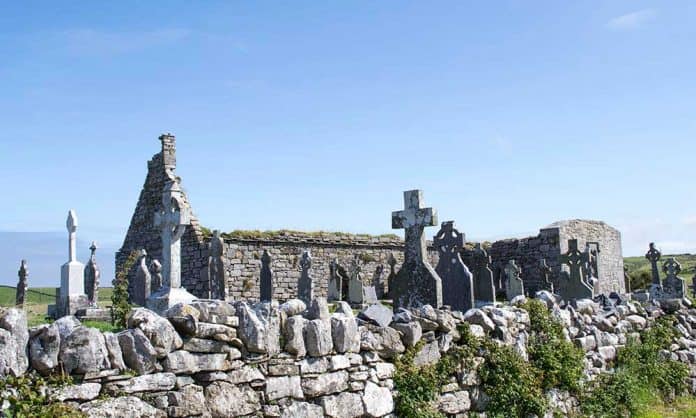
The parish of Killilagh is located in the north-west corner of the Barony of Corcomroe in County Clare, Ireland.
A small and sparsely populated parish, the mountainous landscape ends at the South Sound and the bay of Doolin, overlooking the Aran Islands, Cliffs of Moher and the wider Atlantic.
Evidence of the parish’s quarrying heritage scars the landscape nearby, with four major quarries at Doonagore, Moher, Lough and Caherbana once supplying their famous paving flags for London’s streets and the stone floor of the Royal Mint.
The parish suffered greatly during the Cromwell invasion.
Nearby there are a number of important heritage sites, including a Neolithic Court Tomb at Teergonean and a number of castles, ancient fortifications and churches.
Close to Killilagh’s old church there is a large rock known as Carrig na Luinge Bui, or ‘Rock of the Yellow Ship’, while the nearby caves attract pot-holers from all over the world.
Visitors to the church can also enjoy stunning views of the Cliffs of Moher, which stretch south towards the Shannon Estuary and the site where Doolin Castle once stood.
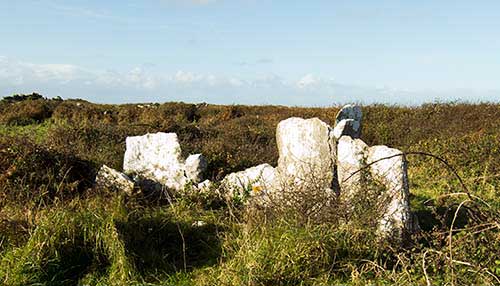
The Church’s Early Years
Although a place of worship had almost certainly stood on the site for hundreds of years before, it was in 1470 when the now ruined church was built.
With a central wing measuring just over 17 metres in length by five metres in width, the church is small but would have been spacious enough to easily accommodate the local population throughout its use.
Typical of churches of this style and era, its interior would have been very plainly decorated and furnished, with the north wall left blank in accordance with tradition.
Although there would have been some ornate stonework, the Cromwell attack almost certainly damaged much of the original architecture.
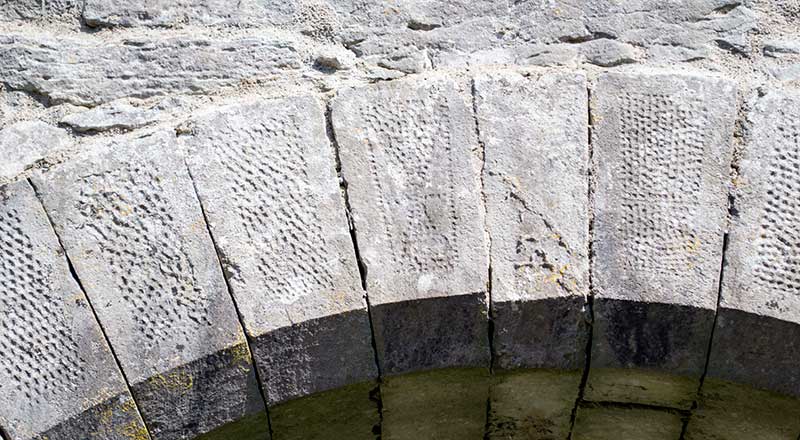
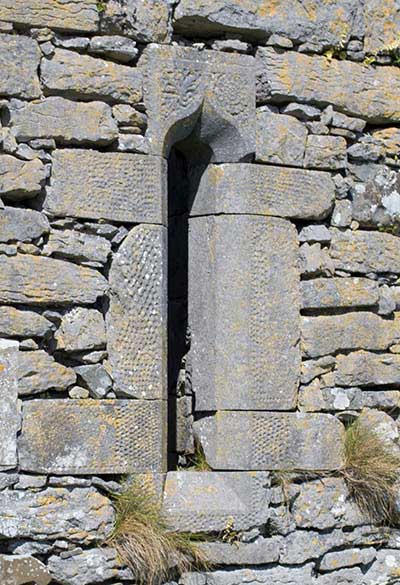
The congregation would have entered the church through a door in the south wall of the nave.
This originally had a keystone in the shape of a cleric’s head which is now displayed at the nearby visitor centre in Kilfenora.
The church’s west end gable was built with a small, square-topped bell tower and window, with a small Ogee-headed window in the neat thin flagstone masonry wall of the side chapel.
The east gable was badly damaged by storms at the beginning of the 20th century, and little now remains.
Attack by the Parliamentarians
In 1645, Cromwellian forces are said to have attacked the church as parishioners had gathered to say Mass, setting fire to the roof of the church.
The Irish Rebellion of 1641 meant that most of the country had come under the rule of the Irish Catholic Confederation, who allied with the English Royalists and went on to be defeated by the Parliamentarians during the English Civil War.
Cromwell’s ‘Model Army’ invaded the country in 1649, the same year King Charles was executed, making the church one of the earliest casualties in the Rump Parliament’s plans to conquer Ireland.
Abandonment and Disrepair
According to the 1841 census, the parish’s population stood at 3,904, and the majority of households would have been very rural.
The year before the census was taken, a new parish church was built quarter of a mile away, and the Killilagh’s church ceased to serve the local community and soon fell into a state of disrepair.
Soon after it stopped functioning as a church, the site became a burial ground, and the earliest graves to be found in and around the ruins of the church date back to 1860.
It was still in use up until 1985 and is now a popular destination for those interested in genealogy and so-called ‘graveyard tourism’.
‘Graveyard Tourism’
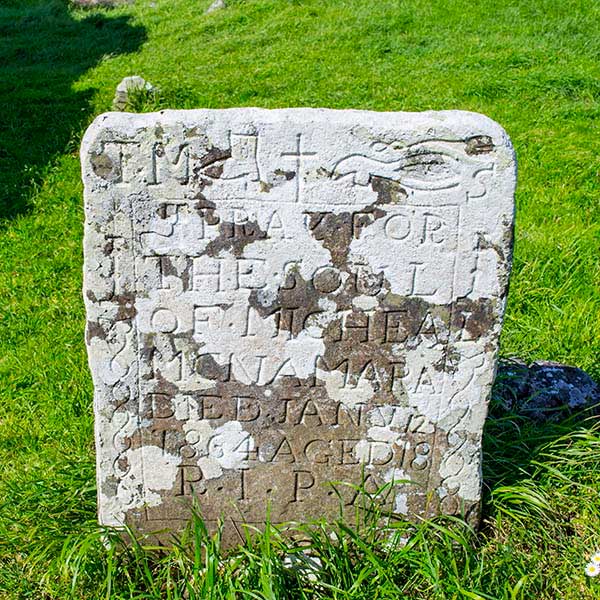
The popularity of programmes such as ‘Who Do You think You Are?’ have led to a boom in people exploring their family and cultural histories, leading many people back to the towns and villages their ancestors came from.
Due to the high numbers of people who emigrated away from the country over the centuries, Ireland tends to attract large numbers of ‘graveyard tourists’, keen to locate the headstones of their forebears and get a feel for the place from which they came.
The parish has welcomed people from around the world who can trace their family history back to this parish, and many visitors have entered the old church and burial ground in search of the graves of their ancestors.
The Save Killilagh Church group has now undertaken a survey of the graveyard, recording headstone texts and carrying out a small amount of restoration and cleaning.
The Troubles
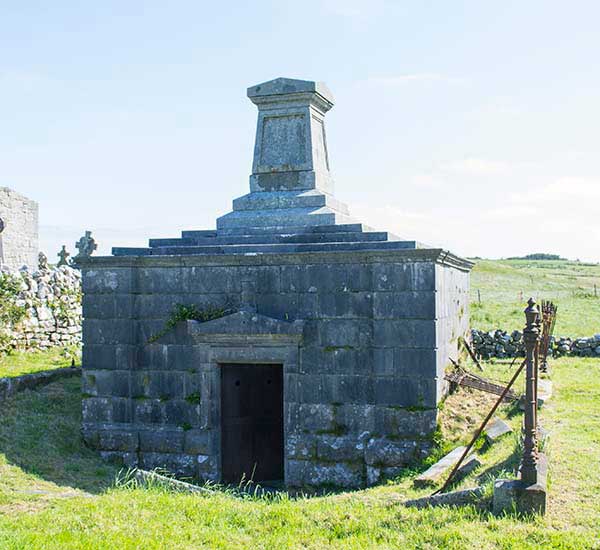
During the Troubles, the MacNamara vault to the south of the church was used as a temporary jail.
Despite this large crypt having been commissioned and built by the MacNamara family, it was never used for burials.
The Stone Head
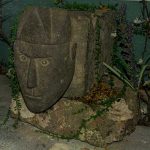
A stone head thought to date back to the second half of the 16th century was discovered by two local men in the region of the Shoemaker’s Grave a number of decades ago and is now on display at the Burren Centre in Kilfenora.
The head, which depicts a cleric wearing a biretta head-dress, would have formed part of the keystone above the main entrance to the church.
Restoration Project
In recent years, a local conservation group has made concerted efforts to save and restore Killilagh’s old church, w1ith local volunteers hosting heritage weekends, fundraising events and talks and activities designed to increase awareness of and appreciation for this historic monument.
Led by Joe McCooey, the Save Killilagh Church Project has already undertaken a survey of the graveyard, for the first time compiling a record of the information detailed on the multiple headstones.
The Doolin Heritage volunteer team have supervised some restoration work carried out by registered conservation stone masons on the church wall and chapel window.
Future plans include the replacement of the door jambs and arches and the reinstatement of the bell tower, which was badly damaged by gales along the Cliffs of Moher.
Some excavation work has also been carried out and continues, with discoveries including parts of the church walls that had become covered by topsoil and the displaced altar, which was located in the transept.
How to get to Killilagh Church
From the centre of Doolin, take the R479 north towards Doolin Cave.
When you get to McDermott’s Pub, take a left hand turn onto a narrow road. After approximately 500 metres up this road you will see a lane on the right leading up to the church which will be visible from the road.
Parking in front of the church is available at the end of this lane.

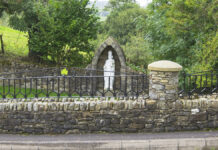
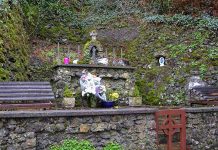
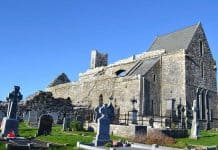

Without success, I have been searching for information about the Macnamara Vault at Killilagh.
I am very interested in its design.
Do you know where I can learn more about its construction?
Is its design traditional, in any way?
It seems to have been deliberately built into the earth – is there any significance to that?
My interest stems from the Tomb of my great great grandmother which can be found in the Knocknakilla cillin near Inagh.
Erected by her widower, she was buried in this similar vault in 1870..
Coincidentally or not, her husband was land agent for the Macnamara family of Ennistymon House.
It seems as though he might have been influenced by the Macnamara vault which I’ve learned was erected in 1854.
The Clare Archeological and Historical Society took a field trip to Knocknakilla a few years ago….. to date, no one has answered my inquiries to the Society so I am reaching out to you.
Hope to hear from you.
I am interested to know if and when the Killilagh Cemetery grave inscriptions may be made public. I am interested in the OBrien families from Doolin and I suspect some of the family graves might be in this cemetery. Any knowledge towards this effort would be greatly appreciated.
If you make contact with Joseph McCooey (Save Killilagh Church Project Doolin) he might be able to help. Go to the following link for more information regarding your query https://www.facebook.com/groups/KillilaghChurchProject/permalink/10156186708388731/
Hope this helps.
Thank you Fergus for your quick response back to me. I have recently read of Joseph and will reach out to him at your suggestion. Thanks again, Tim.